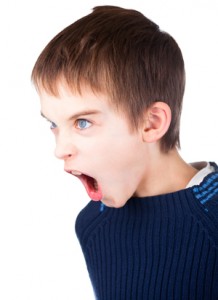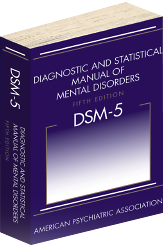New Name and New Treatment for Chronic Fatigue Syndrome
People with chronic fatigue syndrome, or myalgic encephalomyelitis, as it has also been called, suffer from extreme exhaustion and unrefreshing sleep. The condition has been considered mysterious, but new research is clarifying its symptoms and leading to more useful treatments. In 2015, a committee convened by the Institute of Medicine at the National Academy of Sciences decided to change the name of the condition to systemic exertion intolerance disease (SEID) to better reflect its symptoms and reduce stigma around the illness.
In recent years it had been determined that exercise regimens and cognitive behavioral therapy helped up to 60% of patients. Some new small studies show great results when patients are treated with anti-viral medications such as valacyclovir (Valtrex). Researcher Theodore Henderson reports that he has seen response rates as high as 85% in adults and 92% in adolescents.
Researchers now believe that some patients diagnosed with depression may actually have SEID. Symptoms like fatigue, exertion-induced malaise, brain fog, and impaired academic performance could be the result of the body’s reaction to a virus.
Inflammation Can Differentiate Apathy From Depression in Older Patients
In a new study by ESM Eurelings and colleague in the journal International Psychogeriatrics, the inflammatory marker C-reactive protein differentiated between older people with symptoms of apathy versus symptoms of depression. Higher levels of C-reactive protein were found in those with symptoms of apathy. The researchers concluded that apathy may be a manifestation of mild inflammation in elderly people.
Brain Activity Differentiates Youth with Bipolar Disorder from Youth with Unipolar Depression
Both bipolar disorder and unipolar depression often begin in childhood or adolescence, but it can be difficult to distinguish the two using symptoms only. People with bipolar illness may go a decade without receiving a correct diagnosis. Researcher Jorge Almeida and colleagues recently performed a meta-analysis of previous studies to determine what neural activity is typical of children with bipolar disorder versus children with unipolar depression while processing images of facial emotion. They found that youth with bipolar disorder were more likely to show limbic hyperactivity and cortical hypoactivity during emotional face processing than youth with unipolar depression. Almeida and colleagues hope that this type of data may eventually be used to diagnose these disorders or to measure whether treatment has been successful.
Differences in Depressive Episodes Across Bipolar I, II, and Major Depression
 In a recent retrospective study, people with bipolar disorder I, bipolar disorder II, and major depressive disorder were interviewed about a 14-year period of their illness, and several differences emerged.
In a recent retrospective study, people with bipolar disorder I, bipolar disorder II, and major depressive disorder were interviewed about a 14-year period of their illness, and several differences emerged.
People with bipolar disorder I described their illnesses as including more psychomotor retardation (slowing of movements) and more psychotic features. People with bipolar disorder II had more mixed states than both people with major depression and people with bipolar I disorder. They also had less psychomotor slowing than people with bipolar I disorder.
Another purpose of this study by Andrew Frankland and colleagues in the Journal of Clinical Psychiatry, was to determine the effectiveness of the Probabalistic Approach to Bipolar Disorder, a statistical method for differentiating diagnoses. The approach was successful in differentiating both bipolar subtypes from major depression, but not in differentiating between the bipolar subtypes.
PANS, an Inflammatory Disease with Psychiatric Symptoms in Kids
 Researcher Kiki Chang discussed pediatric acute onset neuropsychiatric syndrome (PANS), an inflammatory illness with psychiatric symptoms, at the 2014 meeting of the American Academy of Child and Adolescent Psychiatry. PANS is diagnosed when following an infection, a child who had previously been well has a sudden onset of obsessive-compulsive disorder (OCD), mood dysregulation, tics, food restriction behaviors, and a variety of other symptoms. A similar syndrome called PANDAS (for pediatric acute onset neuropsychiatic disease associated with streptococcal infections) was first identified in children recovering from strep throat. The children suddenly developed OCD behaviors and tics after a streptococcal infection.
Researcher Kiki Chang discussed pediatric acute onset neuropsychiatric syndrome (PANS), an inflammatory illness with psychiatric symptoms, at the 2014 meeting of the American Academy of Child and Adolescent Psychiatry. PANS is diagnosed when following an infection, a child who had previously been well has a sudden onset of obsessive-compulsive disorder (OCD), mood dysregulation, tics, food restriction behaviors, and a variety of other symptoms. A similar syndrome called PANDAS (for pediatric acute onset neuropsychiatic disease associated with streptococcal infections) was first identified in children recovering from strep throat. The children suddenly developed OCD behaviors and tics after a streptococcal infection.
However, PANS is associated with a variety of infections, including viruses and other infections that do not involve streptococcus bacteria. PANS syndrome is typified by acute onset of obsessive compulsive disorder and food restrictions as well as two or more of the following symptoms: anxiety, mood swings and depression, irritability and aggression, behavioral regression, decreases in school performance, sensory motor abnormalities, and somatic alterations such as decreased sleep and urinary incontinence, frequency, and/or urgency. Tics are not part of the formal diagnosis, but are present in about 50% of patients.
In Chang’s experience, the syndrome emerged 65% of the time in relationship to streptococcal infections, 13% with mycoplasma infections, 58% with viral infections, 39% in association with sinusitis, and 16% with otitis (inflammation of the ear). Increases in blood flow in the basal ganglia and increases in its volume likely occur due to antibodies that the immune system produces to fight infection, but which instead attack elements in the brain’s striatum, including tubulin, calcium calmodulin kinase II, lyso-GM-1, and dopamine D1 and D2 receptors.
Chang suggested that a diagnostic workup for PANS should include: a complete blood count and screening for red blood cell sedimentation rate, mycoplasma antibodies IgG and IgM, anti-nuclear antibodies (ANA), ferritin (a protein that stores iron in blood), celiac disease, and other laboratory measures that are commercially available in a panel produced by the company Moleculera Labs. A more detailed description of the PANS syndrome and its diagnosis and workup is available in the most recent 2014 issue of the Journal of the American Academy of Child and Adolescent Psychiatry.
In a related poster, Jennifer Frankovich, another researcher in Chang’s lab, reported that 62% of family members of children with PANS had a history of autoimmune disorders.
Ratio of Cortisol to CRP May Affect Depression
New research suggests that the ratio of cortisol to C-reactive protein (CRP), a marker of inflammation, may be a biomarker of depression that affects men and women differently. In women, lower ratios of cortisol to CRP were associated with more severe depression symptoms, including poor quality sleep, sleep disturbances, and decreased extraversion. In men, higher ratios of cortisol to CRP were associated with more daytime disturbance and greater anxiety. The study by E.C. Suarez et al. was published in the journal Brain, Behavior, and Immunity.
Further work must be done to confirm whether low cortisol and high inflammation predicts depression in women, while the opposite (high cortisol and low inflammation) predicts depression in men.
Differentiating ADHD and Bipolar Disorder
Three articles in the September 2014 issue of the journal Psychiatric Annals (Volume 44 Issue 9) discussed differentiating pediatric bipolar disorder from attention deficit hyperactivity disorder (ADHD). The first article, by Regina Sala et al., said that reasons to suspect bipolar disorder in a child with ADHD include:
- The ADHD symptoms appear for the first time after age 12.
- The ADHD symptoms appear abruptly in an otherwise healthy child.
- The ADHD symptoms initially responded to stimulnts and then did not.
- The ADHD symptoms come and go and occur with mood changes.
- A child with ADHD begins to have periods of exaggerated elation, grandiosity, depression, decreased need for sleep, or inappropriate sexual behaviors.
- A child with ADHD has recurring severe mood swings, temper outbursts, or rages.
- A child with ADHD has hallucinations or delusions.
- A child with ADHD has a strong family history of bipolar disorder in his or her family, particularly if the child does not respond to appropriate ADHD treatments.
The second article, by this editor Robert Post, Robert Findling, and David Luckenbaugh, emphasized the greater severity and number of symptoms in childhood onset bipolar disorder versus ADHD. Children who would later develop bipolar disorder had brief and extended periods of mood elevation and decreased sleep in the early years of their lives. These, along with pressured speech, racing thoughts, bizarre behavior, and grandiose or delusional symptoms emerged differentially from age three onward. In contrast, the typical symptoms of ADHD such as hyperactivity, impulsivity, and decreased attention were equal in both diagnoses.
In the third article, Mai Uchida et al. emphasized the utility of a family history of bipolar disorder as a risk factor. Moreover, a child with depression plus ADHD is at increased risk for a switch into mania on antidepressants if there is a family history of mood disorders, emotional and behavioral dysregulation, subthreshold mania symptoms, or psychosis.
The differential diagnosis of ADHD versus bipolar disorder (with or without comorbid ADHD) is critical, as drug treatment of these disorders is completely different.
Bipolar disorder is treated with atypical antipyschotics; anticonvulsant mood stabilizers, such as valproate, carbamazepine, or lamotrigine; and lithium. Only once mood is stabilized should small doses of stimulants be added to treat residual ADHD symptoms.
ADHD, conversely, is treated with short- or long-acting stimulants such as amphetamine or methylphenidate from the onset, and these may be augmented by the noradrenergic alpha-2 agonists guanfacine or clonidine. The selective noradrenergic re-uptake inhibitor atomoxetine is also approved by the Federal Drug Administration (FDA) for the treatment of ADHD. The dopamine-active drug bupropion and the anti-narcolepsy drugs modafinil and armodafinil have mild anti-ADHD effects but have not been FDA-approved for that purpose.
Differentiating Bipolar Disorder and ADHD in Childhood
At the 2014 meeting of the International Society for Bipolar Disorders, researcher B.N. Kim discussed symptoms that could distinguish between bipolar disorder and attention deficit hyperactivity disorder (ADHD) in childhood. Both disorders are characterized by decreased attention, concentration, and frustration tolerance, and increased activity, impulsiveness, and irritability.
Kim shared several differential symptoms that are more indicative of a bipolar diagnosis and that are inconsistent with a simple ADHD diagnosis (and this editor Robert Post has added several more). Signs and symptoms that suggest bipolar disorder and not ADHD include: decreased need for sleep, brief and extended periods of euphoria, hypersexuality, delusions, hallucinations, suicidal or homicidal impulses and/or actions, extreme aggression, and multiple areas of extreme behavioral dyscontrol. ADHD, on the other hand, is characterized by more difficulty focusing attention, and by less extreme symptoms in general.
Irritable, Elated, And Combined Bipolar Subtypes in Children Are Similar
Research on early-onset bipolar disorder has often hinged on identifying the key characteristics of the disorder. At a symposium on the course of bipolar disorder in children at the 2013 meeting of the American Academy of Child and Adolescent Psychiatry (AACAP), Jeff Hunt of Brown University discussed findings from COBY, the Collaborative Child Bipolar Network. He described the course of illness in 446 children with bipolar disorder, including 10% who had irritability at baseline, 15% who had elated mood at baseline, and a majority (75%) who had both irritability and elation at baseline.
Most factors such as positive family history of bipolar illness and comorbidities including attention deficit hyperactivity disorder (ADHD) did not differ across the three groups. The three subtypes (irritable, elated, or mixed) did not remain stable, and most of the children eventually converted to the combined irritable and elated subtype. These data contrast with those of Ellen Liebenluft et al., who found that those with severe mood dysregulation or chronic irritability (but not other key characteristics of bipolar disorder) did not go on go on to receive a bipolar diagnosis and tended not to have a family history of bipolar disorder.
The NIMH May Move Away from Using DSM-5
 The psychiatric community has been preparing for the 2013 release of the Diagnostic and Statistical Manual of Mental Disorders, Fifth Edition (DSM-5) by the American Psychiatric Association for years. Each new edition of the manual reflects changing conceptions of illnesses and their diagnosis and treatment.
The psychiatric community has been preparing for the 2013 release of the Diagnostic and Statistical Manual of Mental Disorders, Fifth Edition (DSM-5) by the American Psychiatric Association for years. Each new edition of the manual reflects changing conceptions of illnesses and their diagnosis and treatment.
Tom Insel, the director of the National Institute of Mental Health (NIMH), the largest research organization in the world devoted to the understanding and treatment of mental disorders, caused a stir this past spring when he wrote in a blog post that the DSM-5 lacks validity and that patients deserve better.
The DSM-5 guidelines for diagnosis of mental disorders rely on descriptions of clusters of symptoms, and Insel suggested that new methods of diagnosis that rely on laboratory measure should be developed. The NIMH is launching a project called Research Domain Criteria (RDoC) to incorporate genetics, imaging, and other data in a new classification system for illnesses, and is re-orienting their funding toward projects that “look across current categories,” for example by including all patients in a mood disorder clinic rather than only those who meet DSM-5 criteria for major depressive disorder.
A major concern about this change at the NIMH, which funds much of the research that leads to Federal Drug Administration-approved treatments, is that it will diminish funding for treatment studies in specific diagnostic categories where research is already sparse, such as childhood onset bipolar illness. This may leave many children and adults without a sound evidence base upon which their doctors can base treatment decisions.
Under the NIMH’s new rubric, clinical treatment studies to collect comparative data and evidence-based treatment research would likely lose out to studies focused on the broad collection and identification of biomarkers and the pursuit of new treatment targets. Answering an important clinical question such as whether symptoms of childhood onset bipolar disorder respond to the same medications as oppositional defiant disorder (ODD) or disruptive mood dysregulation disorder (DMDD) might not be a high priority for study.
David Kupfer, chair of the APA’s DSM-5 Task Force, responded to Insel’s statement saying that while it would be great to identify biomarkers and genetic indicators for mental illnesses, “this promise, which we have anticipated since the 1970s, remains disappointingly distant.” Insel acknowledged in his statement that this is only the beginning of development of research domain criteria, and that “for the present” the DSM will continue to be used.








